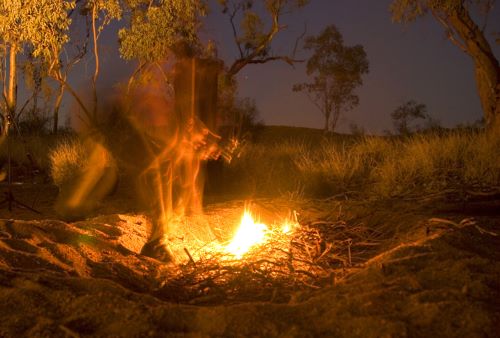Robert Curgenven
Working with harmonics, textures and resonance as articulated not only through instruments/objects, in space and place, but also in time and the dislocation of the remote, Robert’s sound explores slowly shifting layers in the fabric of fields of perception.
Robert inaugurated "Sounds Unusual – Northern Territory for New Music", now in its second year in northern Australia and also "Recorded Fields", a label for sound art and field recordings based in Central Australia. He has released a solo CD for privatelektro, "cichaczem" (2005), which was described by "disquiet" magazine as:
"absolutely beautiful distillations of sound mixing the familiar textures of field recordings, including falling snow and the period after a thunderstorm, with hyper-sensitive recordings of a grand piano that suggest the open spaces only alluded to by most synthesizers".
His soundtrack to Lezsek Paul’s "Terrain der Zeit" has has been included in screenings at Prix de la Creation Video, Clermont-Ferrand, France (2007), Filmfest Dresden, Germany (2006) and Experyment V Internation Art Meeting Zbaszyn, Poland (2005). He has had installations/group exhibitions in Darwin, Fremantle, Koln and Berlin. Robert has performed at Transmediale (Berlin) events throughout Australia, and tours of Germany, Netherlands, Belgium, UK, France and Japan.
www.soundsunusual.com
www.recordedfields.net
"Silent Landscapes No. 2"
Nightfall by a riverside camp near Wollumbin (Mt Warning), walking in dry grass, the sharp call of a single insect emerges. Above the nearby road, power lines catch the breeze – an echo finding resonance over 3000 kilometres west at Karlu Karlu (Devil’s Marbles) in Central Australia, where the wind strikes a parallel rhythm some years before. Further north, other winds blow in grevilleas lining the Buchanan Highway, en route to the Tanami Desert. Along a river, 20 metres deep in a flood that isolates a town, crickets pulse agitatedly on the Tropics‘ edge. Two thousand kilometres east, aeolian currents bring the Musical Fence in Central Queensland to a slow crescendo. Finally, 2000 kilometres south east again, returning through the grass to camp, the cycle is, for now, complete.
